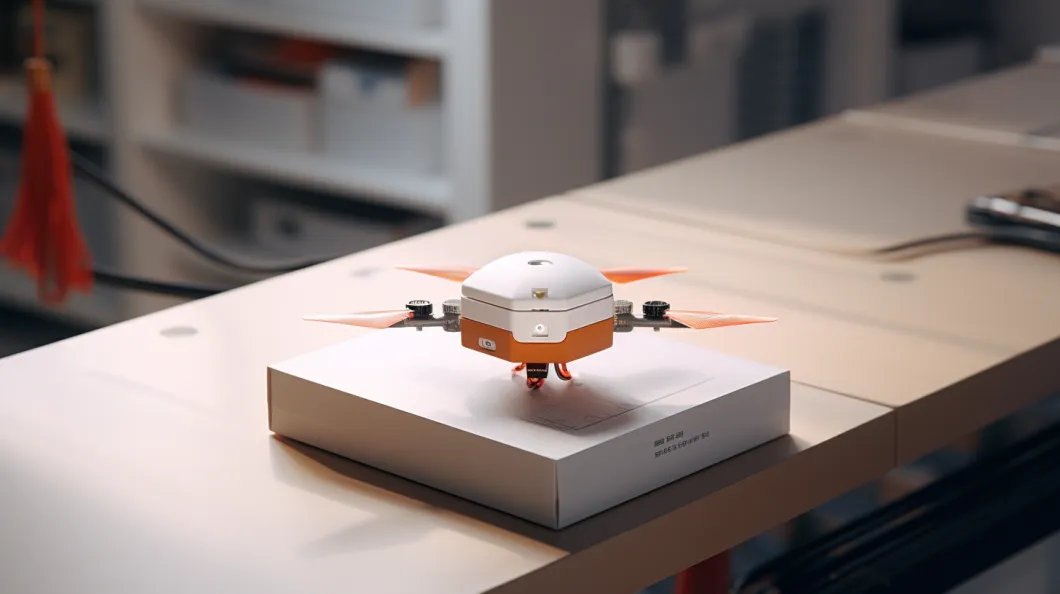Table of Contents
Unleash the inner creative superpower with Generative AI use cases! Craft original stories, design futuristic cities, chat with virtual friends, or solve problems no human has tackled before. This AI wizard conjures up text, images, and even data on demand, fueling your imagination and opening doors to endless possibilities. Dive into the future of creation, where anything is possible with a spark of AI magic.
Generative AI in the factory: 5 ways robots are reimagining manufacturing
- Monitoring events generated by machines.
- Automating customer service.
- Searching and synthesizing documents.
- Discovering product and content catalogs.
- Providing advisory services for supply chain management.
1. Monitoring events generated by machines
The field of machine-generated events monitoring has seen significant advancements in 2023, focusing on increased automation, improved anomaly detection, and enhanced integration with Generative AI Use Cases. Here are some key updates:
AI-powered Anomaly Detection:
- Unsupervised anomaly detection algorithms: New approaches using self-supervised learning are able to detect anomalies in complex data streams even without labeled training data. This is crucial for monitoring systems generating diverse and evolving events.
- Explainable Generative AI for anomaly insights: Advancements in explainable Generative AI Use case techniques make it easier to understand why an anomaly was flagged, providing valuable context for incident response.
- Predictive analytics for proactive troubleshooting: By leveraging Generative AI Use Cases to analyze event patterns, systems can predict potential issues and suggest preventative actions before they occur.
Streamlined Automation and Integration:
- Automation in event correlation and root cause analysis: AI-powered platforms can now automatically correlate related events and identify root causes, reducing manual workload and speeding up incident resolution.
- Integration with AIOps and Cloud platforms: Monitoring tools are increasingly integrating with AIOps platforms and cloud environments, enabling centralized event management and seamless data exchange.
- Low-code/no-code tools for event monitoring: Platforms with simplified configuration and visualization tools are making it easier for non-technical users to leverage machine-generated events for troubleshooting and analysis.
Emerging Trends:
- Edge computing for distributed event monitoring: As more data is generated at the edge, monitoring solutions are evolving to capture and analyze events directly on edge devices, reducing latency and improving responsiveness.
- Federated learning for collaborative anomaly detection: This approach allows the sharing of insights and models across different organizations without compromising data privacy, leading to more robust and accurate anomaly detection.
- Focus on interpretability and trust: As reliance on Generative AI Use Cases increases, there’s a growing emphasis on ensuring transparency and building trust in the algorithms used for event monitoring.
Resources to Stay Updated:
- Conferences: KDD 2023, Dependable Computer Systems and Networks (DepCoS-RELCOMEX) 2023, IEEE/ACM Symposium on Edge Computing (SEC) 2023
- Research papers: arXiv, ACL, NeurIPS
- Industry publications: The New Stack, VentureBeat, TechCrunch
- Vendor announcements: Major monitoring tool providers like Splunk, Sumo Logic, Datadog
Also read related content – Intel Launches New AI Chips to Challenge Nvidia and AMD
2. Automating Customer Service in 2023
Customer service automation is hotter than ever in 2023, fueled by advanced Generative AI Use Cases and a focus on seamless customer experiences. Here’s a snapshot of the latest trends:
Hyper-personalization:
- Smart Chatbots: Natural Language Processing (NLP) advancements allow chatbots to understand context, personalize responses, and even handle complex inquiries. Think bots recommending products based on past purchases or resolving minor issues autonomously.
- Micro-targeting: Generative AI Use Cases analyze customer data to predict needs and deliver proactive support. Imagine chatbots popping up with order updates or troubleshooting tips before issues arise.
Omnichannel Integration:
- Seamless Journeys: Customers expect consistent service across channels. Tools are now blurring the lines between email, chat, and social media, offering a unified experience with automated routing and context transfer. Additionally, integrating call center software further enhances this seamless experience, allowing for efficient management of voice interactions alongside other communication channels.
- Voice AI Rising: Interactive Voice Response (IVR) is getting smarter. Voice assistants answer complex questions, schedule appointments, and even handle frustration with empathy.
Beyond Automation:
- Human-AI Collaboration: Automation isn’t about replacing humans, but empowering them. Generative AI Use Cases handle repetitive tasks, freeing agents to focus on complex scenarios and building customer relationships.
- AI-powered Agent Coaching: Tools analyze agent interactions and suggest improvements, leading to better skills and happier customers.
Examples in Action:
- Domino’s Pizza: Generative AI chatbots help customers order pizza and answer basic questions, freeing human agents for complex issues.
- Airbnb: Personalized recommendations and automated responses for common inquiries streamline the guest experience.
- Zapier: AI-powered support analyzes tickets and suggests solutions, speeding up agent resolution times.
Also, read related content – Yantra’s Remarkable Investment of Rs 100 Crore in India’s Generative AI Market
3. Diving into Documents: Latest Trends in Searching and Synthesizing (2023)
Searching and synthesizing documents have seen exciting advancements in Generative AI Use Cases 2023, making information discovery and analysis more efficient and insightful. Here’s a glimpse into the hottest trends:
AI-powered Search on Steroids:
- Semantic search: Understanding the meaning and relationships between words, not just keyword matching, leads to more relevant and context-aware results. Imagine finding documents not just by a specific term, but by its underlying concept.
- Factual search: Extracting key facts and entities from documents allows for precise filtering and aggregation, like pinpointing documents referencing specific companies or locations within a specific timeframe.
- Personalized search: Algorithms tailor search results to individual user preferences and past interactions, ensuring relevant and timely information discovery.
Synthesizing Knowledge Like a Pro:
- Automated summarization: AI can now identify key points and generate concise summaries of complex documents, saving you valuable time and effort.
- Extractive and abstractive summarization: Choose between summaries pulling out key sentences or entirely new summaries capturing the essence of the content.
- Sentiment analysis: Uncover the emotional tone and opinions within documents, providing valuable insights into market trends, customer feedback, or author bias.
Beyond Text, Going Multimodal:
- Search beyond text: Analyze images, audio, and video alongside text documents for a comprehensive understanding of information. Imagine searching for medical findings by analyzing both medical reports and X-ray images.
- Knowledge graphs: Visualize connections between concepts and entities within documents, revealing hidden relationships and patterns that text alone might miss.
Emerging Frontiers:
- Explainable AI for document analysis: Understanding how AI models arrive at their results builds trust and allows for fine-tuning the search and synthesis process.
- Federated learning for privacy-preserving collaboration: Multiple organizations can learn from each other’s document data without compromising sensitive information.
- Cognitive search and assistants: Seamless integration with AI assistants allows for natural language queries and interactive exploration of document collections.
Stay Curious, Stay Informed:
- Conferences: SIGIR 2023, CIKM 2023, NAACL 2023
- Research papers: arXiv, ACL, EMNLP
- Industry publications: Forbes, MIT Technology Review, The Information
- Vendor announcements: Major search and document analysis tool providers like Google AI, Microsoft Azure, and IBM Watson
Also read related content – Gaining an Edge with Top AI Tactics in 2024: Navigating Challenges Amidst Entrepreneurial Competitiveness
4. Discovering Product and Content Catalogs in 2023: A Treasure Trove Awaits
Product and content catalogs are the lifeblood of many businesses, acting as virtual shop windows and knowledge hubs. But navigating the ever-growing ocean of offerings can be overwhelming. Fear not, intrepid explorer! 2023 brings a wave of innovative Generative AI Use Cases and techniques to help you unearth the gems hidden within:
AI-powered Search and Recommendations:
Imagine a genie whisking you to the perfect product or article. AI-powered search engines like Google Shopping and Amazon’s A9 algorithm are getting smarter, understanding your intent and context to deliver hyper-personalized results. Think “I’m craving a cozy fall sweater” and see curated selections based on your past preferences and trending styles.
Visual Search Takes Center Stage:
Tired of struggling with keywords? Snap a picture of that trendy jacket you saw on the street or upload a screenshot of the dish you want to recreate, and visual search engines like Pinterest Lens and Google Lens will do the legwork. They’ll identify similar products or recipes, leading you to a world of possibilities. Before uploading, you can use a screenshot editor to crop, highlight, or annotate specific areas, helping the visual search tool focus on exactly what you’re looking for.
Conversational Interfaces: Chatbots as Shopping Buddies:
Don’t feel like typing or browsing? Strike up a conversation with AI chatbots embedded in catalogs. These virtual assistants can answer your questions, recommend products based on your needs, and even personalize your shopping experience. Think of them as friendly concierges guiding you through the catalog’s labyrinth.
Augmented Reality (AR) Brings Products to Life:
Unsure if that new couch will fit your living room? No problem! AR apps like IKEA Place and Wayfair’s View in Room let you virtually place furniture in your own space, visualizing scale and style before you buy. It’s like trying on clothes for your home!
Content Curation Platforms: Unearthing Hidden Gems:
Content catalogs can be treasure troves of articles, videos, and other resources. Platforms like Flipboard and Nuzzel aggregate content from various sources, allowing you to discover hidden gems based on your interests and the wisdom of crowds. Think of it as a personalized magazine curated by the internet.
5. Navigating the Supply Chain Maze: Latest Trends in Advisory Services (2023)
Supply chains, once hidden backroom operations, have become front-page news in recent years. Disruptions from pandemics, geopolitical tensions, and climate change have highlighted the need for resilient, adaptable, and sustainable supply chains. This is where advisory services for supply chain management come into play in Generative AI Use Cases.
2023 trends in supply chain advisory services:
Embracing Digital Transformation:
- Cloud-based platforms: Advising clients on implementing cloud-based supply chain management systems (SCMs) that offer real-time visibility, improved data analytics, and easier collaboration.
- AI and machine learning: Integrating AI and ML for demand forecasting, predictive maintenance, and automated decision-making, leading to greater efficiency and agility.

- Internet of Things (IoT): Advising on deploying IoT sensors throughout the supply chain to track inventory, monitor conditions, and optimize logistics.

Building Sustainable Supply Chains:
- Green logistics: Helping clients reduce their carbon footprint through route optimization, modal shifts (e.g., rail instead of air), and sustainable packaging solutions.

- Ethical sourcing: Advising on responsible sourcing practices, ensuring fair labor conditions and responsible waste management throughout the supply chain.
- Circular economy: Guiding clients towards implementing circular economy principles, such as product lifecycle management and resource recovery, for a more sustainable future.

Enhancing Resilience and Agility:
- Scenario planning: Helping clients prepare for potential disruptions by developing risk mitigation strategies and alternative sourcing plans.
- Nearshoring and reshoring: Advising on bringing production closer to home or regional hubs to reduce dependence on long-distance, vulnerable supply chains.

- Cybersecurity: Assisting clients in fortifying their supply chains against cyberattacks that could disrupt operations and compromise data.
The Future of Supply Chain Advisory Services:
- Hyper-personalization: Tailoring advice to each client’s specific needs and industry context.
- Continuous learning: Adapting to new technologies and evolving trends in the supply chain landscape.
- Data-driven insights: Leveraging advanced data analytics to provide actionable recommendations and measure the impact of implemented solutions.
Final Thoughts on Generative AI Use Cases 2023
Imagine a world where machines conjure up not just numbers and algorithms, but art, ideas, and even entirely new realities. This fantastical realm is no longer the stuff of science fiction – it’s the domain of Generative AI Use Cases, a revolution reshaping our world one pixel, poem, and protein molecule at a time.
But the magic of Generative AI Use Cases lies not just in its existence, but in its versatility. Some of the most exciting use cases that are transforming industries and igniting imaginations.
This is just the beginning of the Generative AI Use Cases story. So, buckle up, unleash your curiosity, and join the chorus of voices exploring the incredible possibilities this technology holds. Who knows, your next masterpiece might be co-created by an AI – and in that, lies the true magic of this transformative art form.
Ready to delve deeper? Share your thoughts on the most exciting Generative AI Use Cases in the comments below! Let’s explore this brave new world together.